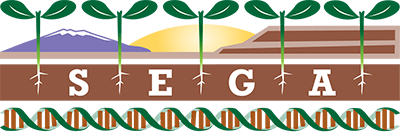You are here
Temperature is better than precipitation as a predictor of plant community assembly across a dryland region.
Publication Type:
Journal ArticleSource:
Journal of Vegetation Science, Volume 27, Issue 5, p.938 - 947 (2016)Abstract:
<h3>Question</h3><p>How closely do plant communities track climate? Research suggests that plant species converge toward similar environmental tolerances relative to the environments that they experience. Whether these patterns apply to severe environments or scale up to plant community-level patterns of relative climatic tolerances is poorly understood. Using estimates of species' climatic tolerances acquired from occurrence records, we determined the contributions of individual species' climatic niche breadths and environmental filtering to the relationships between community-average climatic tolerances and the local climates experienced by those communities.</p><h3>Location</h3><p>Southwestern United States drylands.</p><h3>Methods</h3><p>Interspecific variation in niche breadth was assessed as a function of species' climatic optima (median climatic niche value). The relationships between climatic optima and tolerances were used as null expectations for the relationship between abundance-weighted mean climatic tolerances of communities and the local climate of that community. Deviations from this null expectation indicate that species with greater or lesser climatic tolerances are favoured relative to co-occurring species. The intensity of environmental filtering was estimated by comparing the range of climatic tolerances within each community to a null distribution generated from a random assembly algorithm.</p><h3>Results</h3><p>The temperature niches of species were consistently symmetrical and of similar breadths, regardless of their temperature optima. In contrast, precipitation niches were skewed toward wetter conditions, and niche breadth increased with increasing precipitation optima. At the community level, relationships with climate were much stronger for temperature than for precipitation. Furthermore, cold and heat were stronger assembly filters than drought or precipitation, with the intensity of environmental filtering increasing at both ends of climatic gradients. Community-average climatic tolerances did deviate significantly from null expectations, indicating that species with higher or lower relative climatic tolerances were favoured under certain conditions.</p><h3>Conclusions</h3><p>Despite strong water limitation of plant performance in dryland ecosystems, communities tracked variation in temperature much more closely, intimating strong responses to anticipated temperature increases. Furthermore, abundance distributions were biased toward species with higher or lower relative climatic tolerances under different climatic conditions, but predictably so, indicating the need for assembly models that include processes other than simple environmental filtering.</p>
Notes:
[Original String]:Butterfield, B.J. and Munson, S.M. (In press). Temperature is better than precipitation as a predictor of plant community assembly across a dryland region. Journal of Vegetation Science.
- Log in to post comments
- Google Scholar
- RTF
- EndNote XML
- RIS
Theme by Danetsoft and Danang Probo Sayekti inspired by Maksimer
